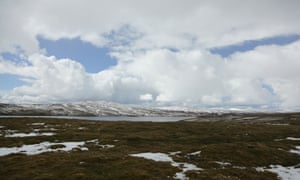DURHAM: Leaving the hedgerowed landscapes far behind, the road finally rose beyond Langdon Beck and even the thin shelter of the stone dikes to the open, snowswept moorland. The wind came unhampered across the highest edge of the Pennines, the iciest of blasts from the north-west corner of the sky. Down below Widdybank Fell the concrete slabs of the new dam at Cow Green neared completion yet still looked insignificant in the great basin of the fells. Lorries roared over the tarmac bringing whinstone from near-by quarries as part of the dam construction. A footpath led down to the falls of Cauldron Snout across some of the most precious slopes of arctic flora in this country. The delicate variation of soil conditions, changing in small compass from bare volcanics to sugar limestone, from peat bogs and to thin glacial drift, together with this most severe of climates produces a unique habitat for the gentian and sandwort, alpine bistort and hair sedge, and a host of other delicate flora which survive here without competition.

It is difficult to think of the final competition of man and the changes that 770 acres of the reservoir will produce. For this was a day to cherish the startlingly clear skyline of the Westmorland Fells to the west, and the lovely conglomeration of names left by the early Norse colonisers, scar, clint, beck, ghyll, simple names with a cutting edge admirably suited to this landscape and this wintry morning.